As per my previous article, last week’s big tech results were a barometer for the current market environment. The outcomes were disappointing; leading the pack was Amazon's (NASDAQ:AMZN) surprise loss (due to Rivian’s valuation write-off), then Alphabet's (NASDAQ:GOOGL) disappointing advertising growth and even companies that out-performed Q1 estimates highlighted multiple headwinds until the end of FY’22 in their calls.
Inflation-driven margin attrition is reducing corporate profits, combined with growth headwinds exposing hefty valuations, leaving equities vulnerable to corrections and prolonged downside volatility. The risks are now clear as the fundamentals have aligned with the bearish macro backdrop that signals a recession could be here. The question is, how long will it last?
Some market pundits argue a recession has been a long time coming and therefore is here to stay. They view the current uncertainty as validation for their long-standing views on valuation anomalies in the market, which they consider unsustainable.
Others, myself included, view these recessionary forces as artificial, probably temporary, yet unpredictable. The current valuation ratios are elevated relative to long-term averages, but this has never been the root cause of a recession; instead, it’s a method to measure the magnitude of a potential market decline.
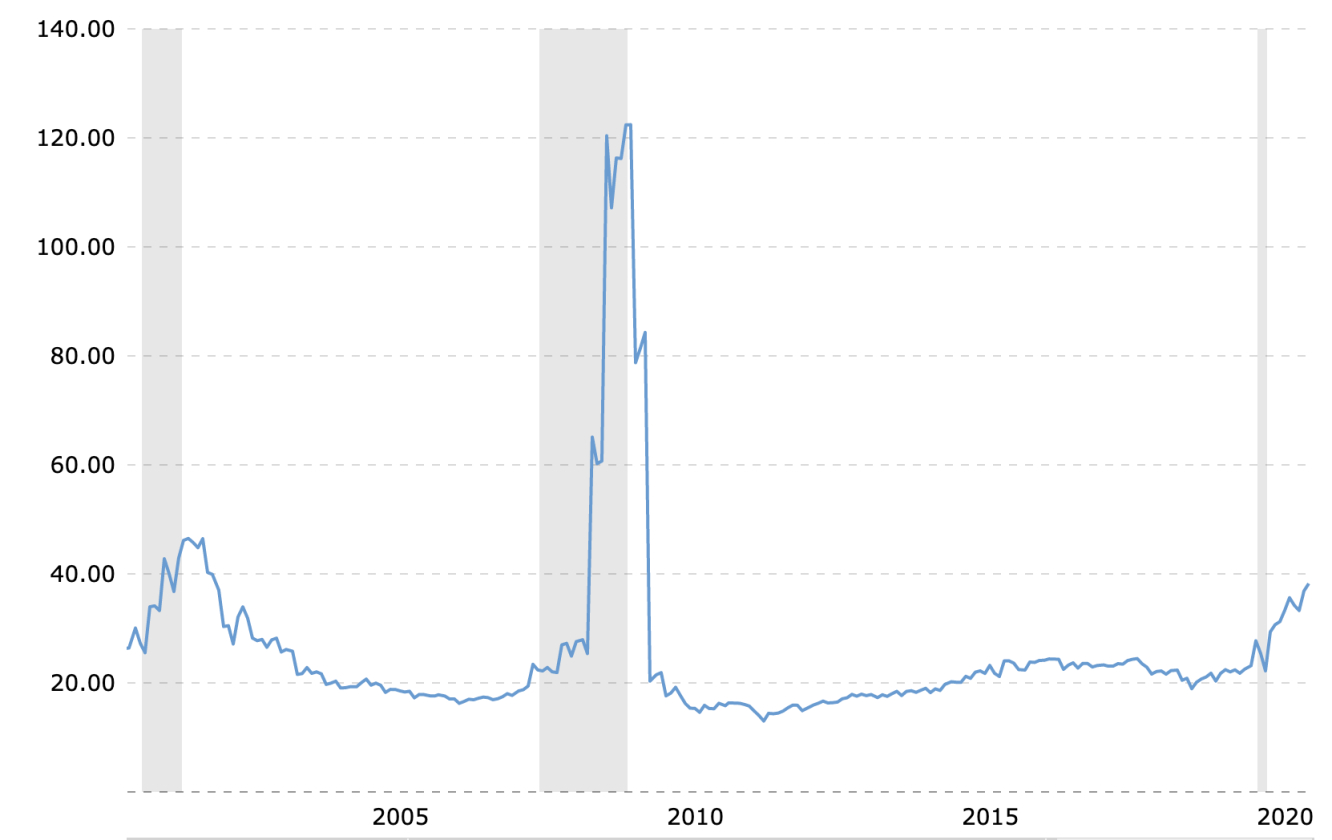
Source: macrotrends.net
In Q1, most earnings calls mentioned inflationary pressures driving costs higher, namely the war in Ukraine and the FED’s policy to tame inflation. NASDAQ constituents have been hit particularly hard, as discount rates increased on par with interest rates, and high growth forecasts have been tempered by analysts—with unfavorable YoY comparisons looming for the remainder of the year.
Macro indicators have also been bearish as of late. Economists use multiple tools to predict recessions, but the inversion of the 10-2 Year Treasury Yield Spread (difference between 10-Year & 2-Year rates) is perhaps the most famous indicator.
The notorious yield inversion occurs as the spread turns negative, an accurate predictor of every major recession since 1955–albeit considered a far-leading indicator (6-24months prior).
This time around, the inversion is weak, pointing to a short-lived recession, possibly partially mitigated by the Fed adapting to the ongoing circumstances. The war in Ukraine probably ended within the year. Perhaps investors should consider the old adage, sell in May and go away.

NASDAQ’s technical breakout below the support at $13,000 all but guarantees that the S&P 500 will also not hold its respective support at $4,110.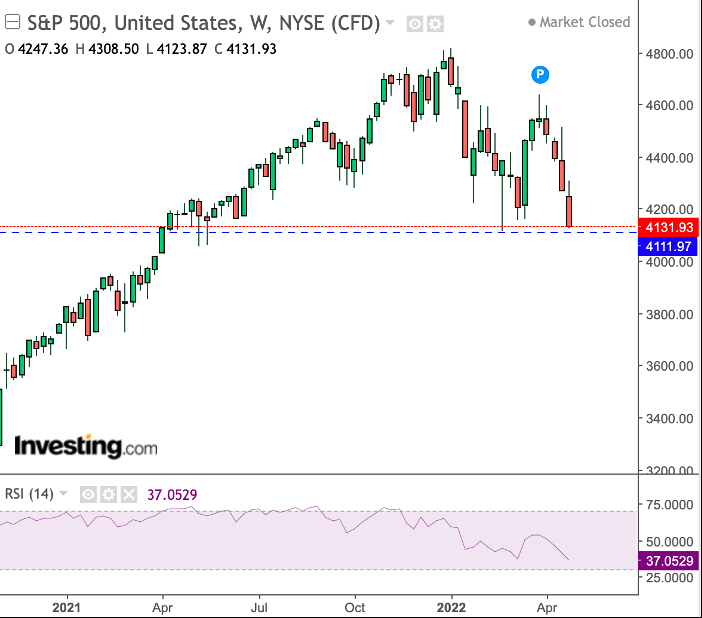
My strong conviction of a short technical recession has led me to identify the catalysts responsible for the current economic downturn to find attractive re-entry points in the US market.
Catalyst 1
The FED's policy is perhaps the most manageable being the only major economic catalyst. Investor fears surrounding the FED’s hawkish view are, in large part, due to uncertainty on the number and size of rate hikes.
In monetary policy, timing is crucial, and margins for error are high, thus fuelling fears of a policy-assisted depression in economic activity. Fears are also propagated by the FED’s notorious track record, with 8 (out of 9) tightening cycles backfiring into full-fledged recessions.
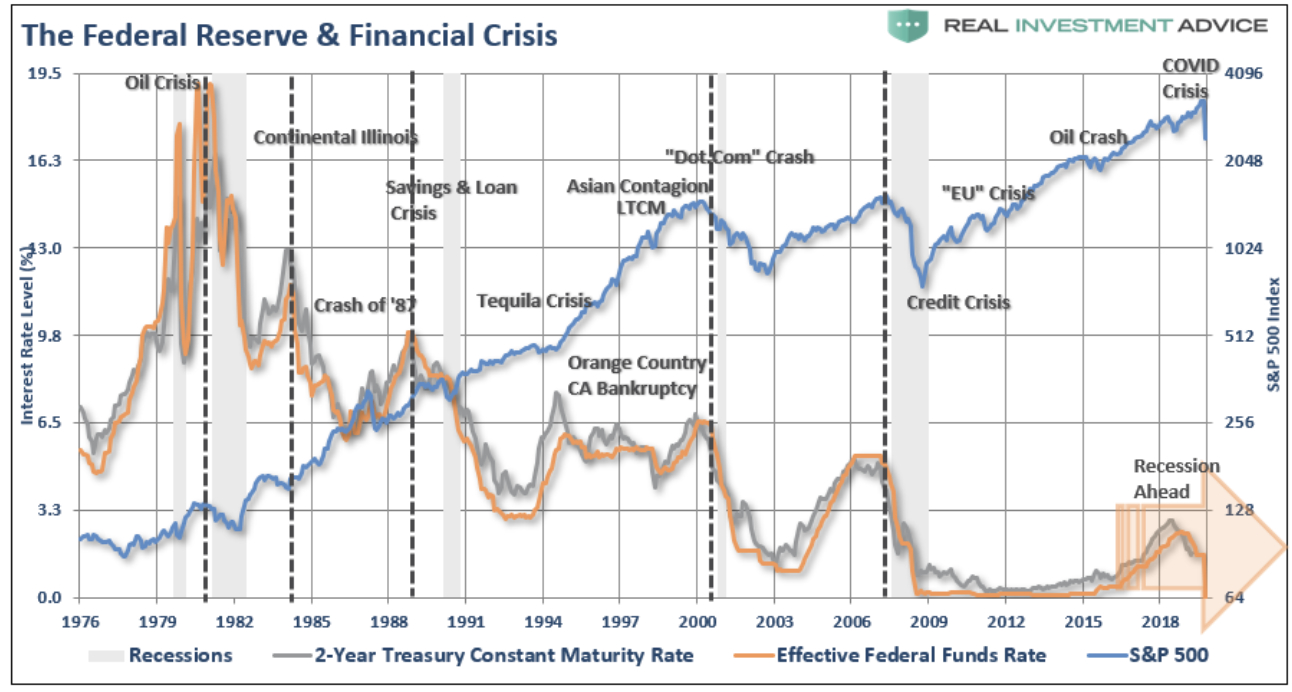
Nonetheless, it’s important to remember that the FED is tightening from extraordinarily accommodative financial conditions this time around—meaning there are ways to go before their policies could potentially strangle economic activity. Despite my expectations of a short-lived recession, it’s a well-known fact that inflation cannot be tamed without pain.
Marc Goldstein, senior VP, and senior policy director for the Committee for a Responsible Federal Budget, said,
“You can’t juice the economy forever and expect that it’s sustainable. You must rip off the Band-Aid before it gets even worse.”

Initially, the FED was heavily criticized for hesitating to act on what Powell called “transitory inflation.” Thus, their abrupt hawkish reaction came under little surprise, as they chose to pre-emptively assume action to avoid a scenario of prolonged uncertainty and massive inflation growth.
Thankfully, today’s macro-environment isn’t comparable to periods of severe recession, which saw double-digit inflation rates. In addition, current PMIs remain significantly above average, contrary to expectations during the initiation of a recession.
Catalyst 2
Russia’s war in Ukraine, a geopolitical catalyst, generated several additional inflationary pressures via the squeeze in the energy sector, supply constraints in agricultural products, and restrictions in the flows of precious metals. Prices for brent crude oil, EU & US natural gas, corn, wheat, and metals index have all shot up to 9 year highs.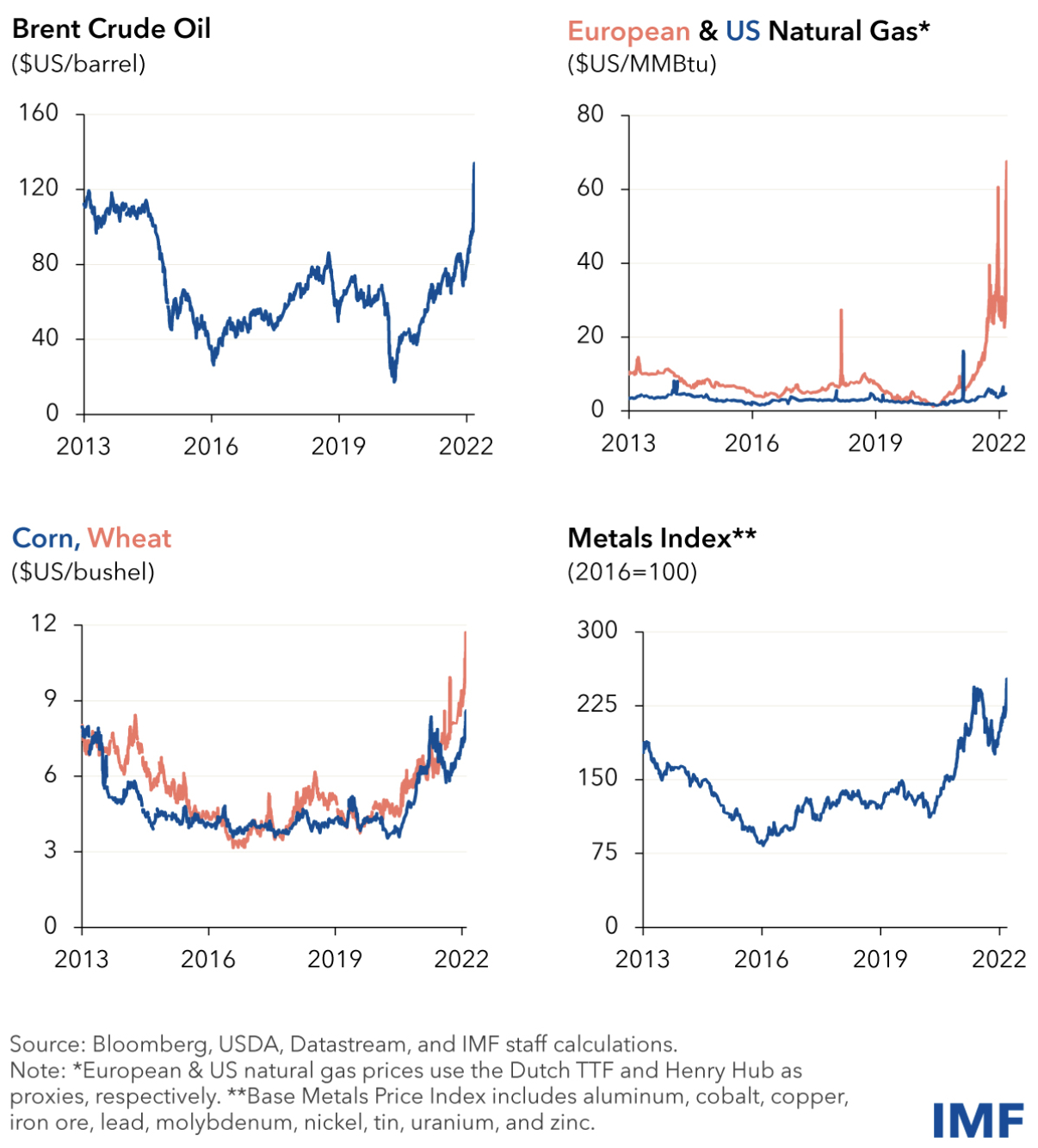
Moreover, Western sanctions also complicated corporate earnings results, weighing on the bottom line despite growing revenues. Several companies were forced to abruptly cut business ties with Russia—the world’s 11th largest economy.
It's no wonder the war in Ukraine has taken center stage in Q1 2022 earnings calls for companies looking to identify and present their headwinds for the year.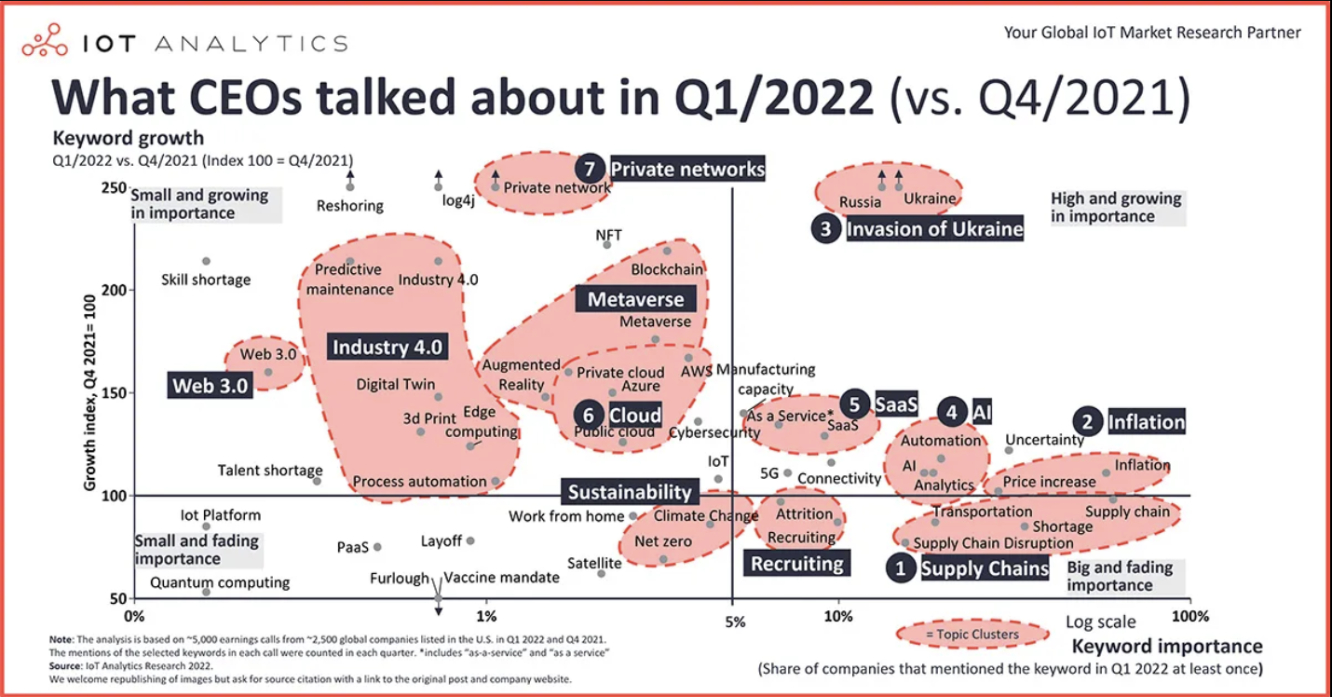
International relations experts are increasingly leaning toward the possibility of a prolonged conflict in Ukraine. Under this new and very probable scenario, the global economy will have to deal with a large-scale supply shock for a lengthy duration.
Prolonged supply shortages are expected to severely hamper economic activity in sectors already hit by the previous COVID-related supply chain crisis. In combination with an expected acceleration of inflation, the risk of stagflation is real.
The duration of the war is directly correlated with the severity of the consequences on the global economy. Therefore, a swift end to the conflict would likely serve as a turning point for investors searching to market-time their re-entry into equity markets.
The Conclusion
Markets are in for a rough ride in the next couple of months. Investors should keep their eyes pinned on any changes in the two major catalysts discussed. The odds-on scenario is a technical recession, with the markets declining for the next two quarters before consolidating as the FED’s rate hike policy will have cleared out by then. The dark horse in the equation is the war in Ukraine and the scenario that it spills over into NATO borders.
Concerning potential re-entry points, the NASDAQ is already down 22.5% peak-to-trough, with the next major support level at $12,200— a ~26% decline from its peak. The S&P 500 index is down 14% peak-to-trough, with the next major support area between $4,000-3,900— a 6-18% from its peak.
Any breakout below the aforementioned support levels would indicate the continuation of the decline to price levels the SPX and NDX registered just before the COVID-related recession in 2020 (i.e., $3,300 and $9,300, respectively).
